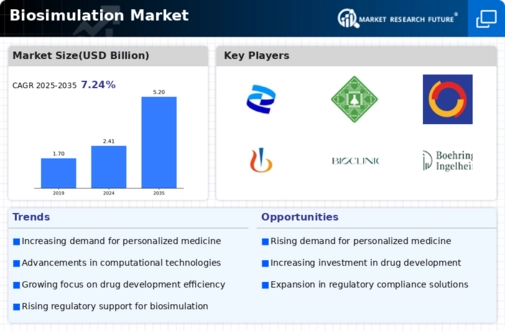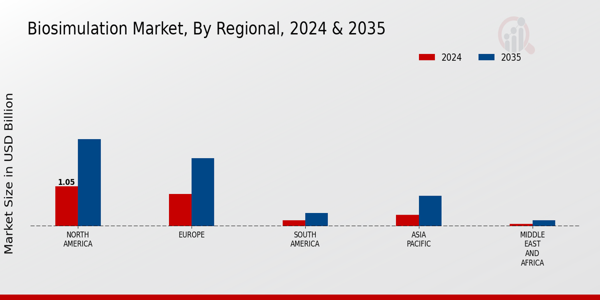Market Analysis
In-depth Analysis of Biosimulation Market Industry Landscape
The biosimulation market has witnessed significant growth in recent years, driven by various factors shaping the healthcare and pharmaceutical industries. Biosimulation, a process of modeling biological systems using mathematical and computational techniques, has become an indispensable tool for drug discovery, development, and regulatory approval. One prominent trend in the biosimulation market is the increasing adoption of personalized medicine approaches. With advancements in genomics and molecular biology, there's a growing understanding of individual variability in disease susceptibility and treatment response. Biosimulation enables researchers to simulate these complex interactions within the body, aiding in the development of tailored treatment regimens that are more effective and safer for patients.Another key trend is the rising demand for virtual clinical trials. Traditional clinical trials are often time-consuming, expensive, and limited by factors like patient recruitment and retention. Virtual trials, facilitated by biosimulation, offer a more efficient and cost-effective alternative. By creating computer models that replicate physiological processes and disease mechanisms, researchers can simulate the effects of new drugs or treatments on virtual patient populations. This approach not only accelerates the drug development process but also allows for more comprehensive exploration of potential outcomes before advancing to human trials.
Moreover, there's a growing emphasis on sustainability and environmental impact in the pharmaceutical industry, driving the adoption of in silico methods like biosimulation. Traditional drug development processes involve extensive laboratory experiments, which consume significant resources and generate large amounts of waste. By leveraging computational models, researchers can reduce the need for experimental testing, minimizing environmental footprint and conserving resources. Additionally, biosimulation enables the prediction of pharmacokinetic and pharmacodynamic properties of drug candidates, helping to identify compounds with favorable efficacy and safety profiles early in the development process, thereby reducing the likelihood of costly failures in later stages.
Furthermore, the COVID-19 pandemic has accelerated the digital transformation of the healthcare and pharmaceutical sectors, leading to increased investment in technologies like biosimulation. The urgency to develop effective treatments and vaccines against the novel coronavirus highlighted the limitations of traditional drug discovery approaches and underscored the importance of innovation in the field. Biosimulation played a crucial role in expediting the development and evaluation of potential therapeutics and vaccines, providing insights into their mechanisms of action and optimizing dosing regimens.
Additionally, collaborations between academia, industry, and regulatory agencies have become more prevalent in the biosimulation market. These partnerships foster knowledge exchange, facilitate access to data and expertise, and promote the development of standardized methodologies and best practices. By working together, stakeholders can address common challenges more effectively and advance the field of biosimulation to new heights.

















Leave a Comment